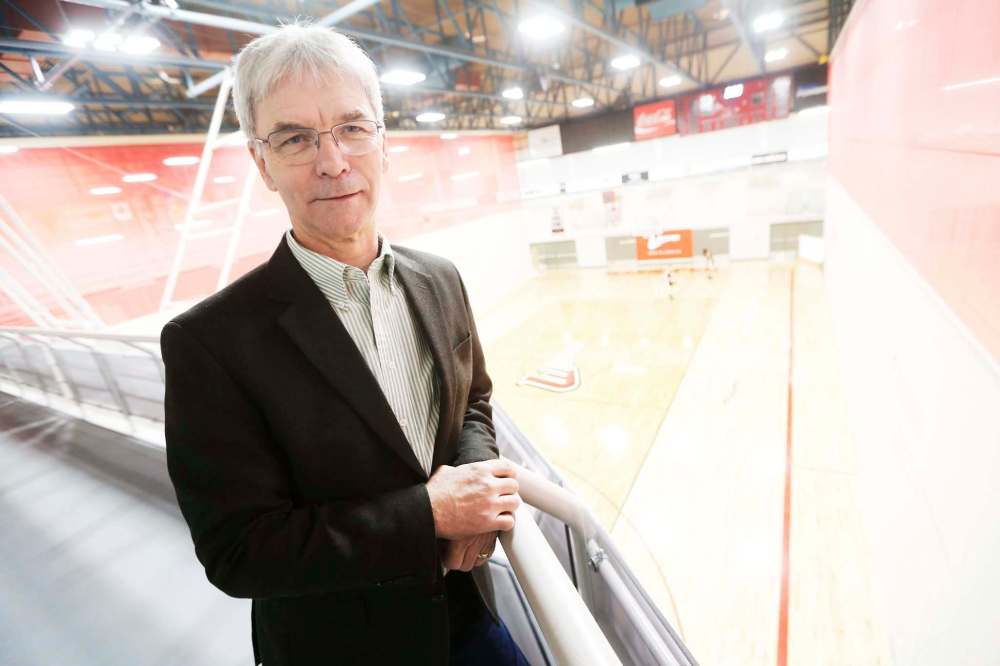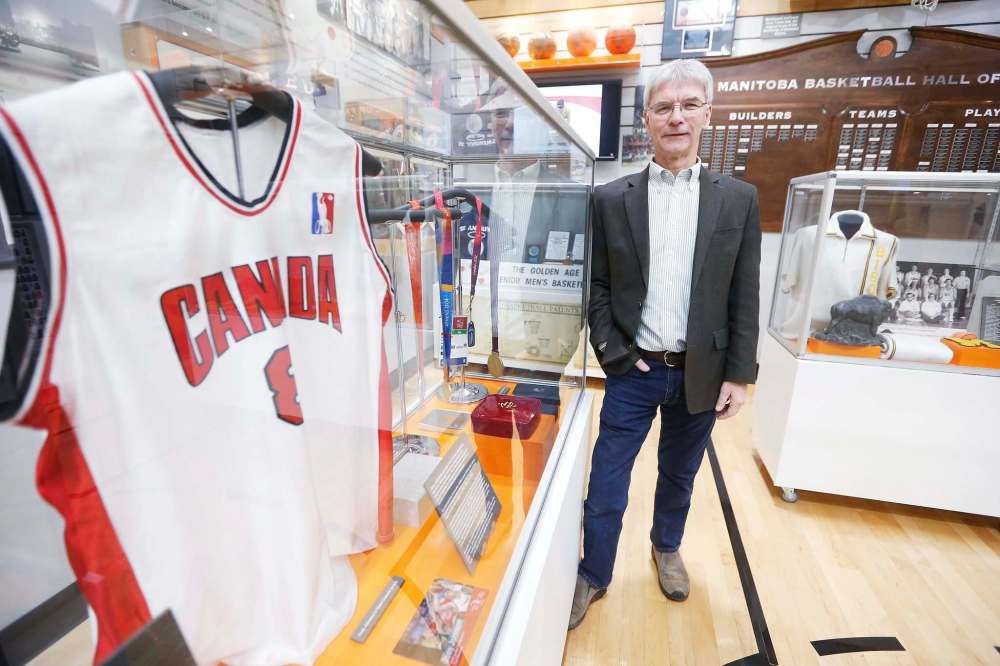No spot for pot
Despite legalization, athletes urged to tread cautiously
Advertisement
Read this article for free:
or
Already have an account? Log in here »
To continue reading, please subscribe:
Monthly Digital Subscription
$1 per week for 24 weeks*
- Enjoy unlimited reading on winnipegfreepress.com
- Read the E-Edition, our digital replica newspaper
- Access News Break, our award-winning app
- Play interactive puzzles
*Billed as $4.00 plus GST every four weeks. After 24 weeks, price increases to the regular rate of $19.00 plus GST every four weeks. Offer available to new and qualified returning subscribers only. Cancel any time.
Monthly Digital Subscription
$4.75/week*
- Enjoy unlimited reading on winnipegfreepress.com
- Read the E-Edition, our digital replica newspaper
- Access News Break, our award-winning app
- Play interactive puzzles
*Billed as $19 plus GST every four weeks. Cancel any time.
To continue reading, please subscribe:
Add Winnipeg Free Press access to your Brandon Sun subscription for only
$1 for the first 4 weeks*
*$1 will be added to your next bill. After your 4 weeks access is complete your rate will increase by $0.00 a X percent off the regular rate.
Read unlimited articles for free today:
or
Already have an account? Log in here »
Hey there, time traveller!
This article was published 08/12/2018 (2482 days ago), so information in it may no longer be current.
In February, Bob Eyler of Michigan came from almost out of nowhere to win the Vegas Shoot, claiming US$52,000 in prize money and the prestige of winning the world’s largest indoor archery tournament.
In October, he was stripped of the title and the cash and handed a two-year exclusion period. His disqualification handed both the money and the victory to Canadian Christopher Perkins, who was the last man to have lost to Eyler in the shootoff (a tie-breaker in archery).
Eyler’s misdeed? He tested positive for cannabis use, as well as propanolol, a drug used to treat high blood pressure. Both are prohibited by the World Anti-Doping Agency.

Getting out in front of legalization, which in Canada began Oct. 17, is something sports agencies have had top of mind since the federal Liberals gained power in 2015. Glen Bergeron, a professor in the Faculty of Kinesiology and Applied Health at the University of Winnipeg, has been part of that effort from the start.
“We had a group formed, well ahead of legalization, with the goal of informing athletes it is still a banned substance in competition, that the sanctions are still the same, and to give some idea of clearance times,” he said.
Bergeron is on the Substance Use in Sport and Health committee of Manitoba’s Sports Medicine Council, and is a leading spokesman on cannabis in sport.
Megan Cumming, communications manager for the Canadian Centre for Ethics in Sport, said cannabis as a prohibited substance has only ever partially been about its legality, especially since Canada is only the most-recent jurisdiction to legalize recreational use.
“Changes in legislation in Canada do not affect its place on the prohibited substance list,” she said. In Eyler’s case, neither did legalization in Nevada, which began in 2016.
Cumming said to be prohibited, a substance must meet two of three criteria: 1. it has the potential to enhance performance, 2. it represents a danger to the health of an athlete or competitors or 3. in the opinion of the World Anti-Doping Agency, violates the spirit of competition. A full list of prohibited substances is available here.
Now, anyone who has seen a Cheech and Chong movie, or been high, might wonder: Dude, how the heck can weed enhance performance?
Bergeron said cannabis alleviates pain and anxiety and has a calming influence on the body. At the highest levels of sport, competition tests not only your skill in the sport, but your ability to manage the physiological effects of stress and anxiety.
An archery shootoff in front of thousands of spectators and broadcast live to the world is certainly stress-inducing, and it’s often the ability to manage that stress and still hold steady to shoot well that separates champions from runners-up.
Safety is another consideration, especially in sports involving weapons and large crowds of competitors and spectators. Bergeron said cannabis also has a detrimental effect on intellectual development in people younger than 25. “Since the majority of athletes are 25 or younger, it’s been decided it has an impact on athlete health, as well.”
In that vein, and in the opinion of the World Anti-Doping Agency, cannabis meets all three of the requirements.
A frequently-asked-questions list on the Canadian sports ethics body’s website goes into greater detail:
“While the CCES does not view cannabis as particularly performance-enhancing, we do have anecdotal accounts of athletes using it therapeutically with the intent to improve performance by managing pain, stress or anxiety,” the FAQ states.

“While cannabis has therapeutic uses, habitual use or abuse presents the potential for harm, especially for younger athletes. Impairment during a competition presents a liability to the safety of the athlete and competitors.”
Bergeron said CBD oil, the largely medicinal component of cannabis, is not banned, but is also no guarantee against a positive test.
Eyler’s case, as outlined in the arbitrator’s ruling clearly shows the responsibility for adhering to the anti-doping regulations rests entirely with the competitor, and that ignorance of the rules is not accepted as an excuse.
Cumming said in the case of medical marijuana, an exemption known as a therapeutic use exemption (TUE) is available, as it is for a number of medications. The forms require extensive information from the athlete’s doctor, including diagnosis, prescription, dosage and reasons why alternative medications that aren’t banned were not prescribed instead. Patients can expect their doctors to levy a fee for filling out the required form.
Such an exemption is not available for recreational use.
Globally, the sports world is not ignorant of the move in various jurisdictions to legalize cannabis. In 2013, the anti-doping agency increased by 10 the threshold of what constitutes a positive test for THC (from 15 nanograms per millilitre to 150).
Because testing for cannabis is done only during competitions, the only requirement is to be clean at the time of the competiton, but that can be complicated. There is no good evidence on how long it takes for cannabis to leave the body. Bergeron said the recommended time between use and competition is 30 days, but even that offers no guarantee.
Bergeron said the difficulty with advising athletes on clearance times is that THC is stored in body fat for quite some time after consumption. Also tricky, there’s no consistency in when, or how much, THC is released into the system for flushing from the body. “If you dump a bunch of THC out of your fat just before competition, your risk of a positive test is very high,” he said.
The only certainty, he says, is not using cannabis at all during a competitive career.
kelly.taylor@freepress.mb.ca

Kelly Taylor
Copy Editor, Autos Reporter
Kelly Taylor is a copy editor and award-winning automotive journalist, and he writes the Free Press‘s Business Weekly newsletter. Kelly got his start in journalism in 1988 at the Winnipeg Sun, straight out of the creative communications program at RRC Polytech (then Red River Community College). A detour to the Brandon Sun for eight months led to the Winnipeg Free Press in 1989. Read more about Kelly.
Every piece of reporting Kelly produces is reviewed by an editing team before it is posted online or published in print — part of the Free Press‘s tradition, since 1872, of producing reliable independent journalism. Read more about Free Press’s history and mandate, and learn how our newsroom operates.
Our newsroom depends on a growing audience of readers to power our journalism. If you are not a paid reader, please consider becoming a subscriber.
Our newsroom depends on its audience of readers to power our journalism. Thank you for your support.

